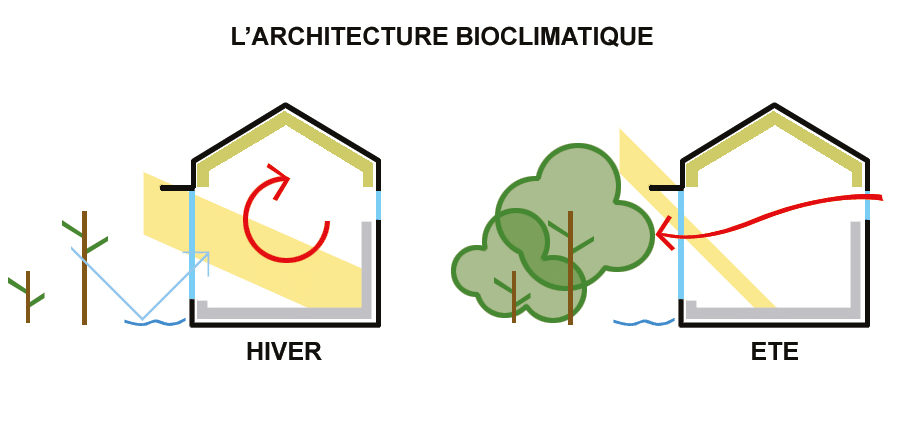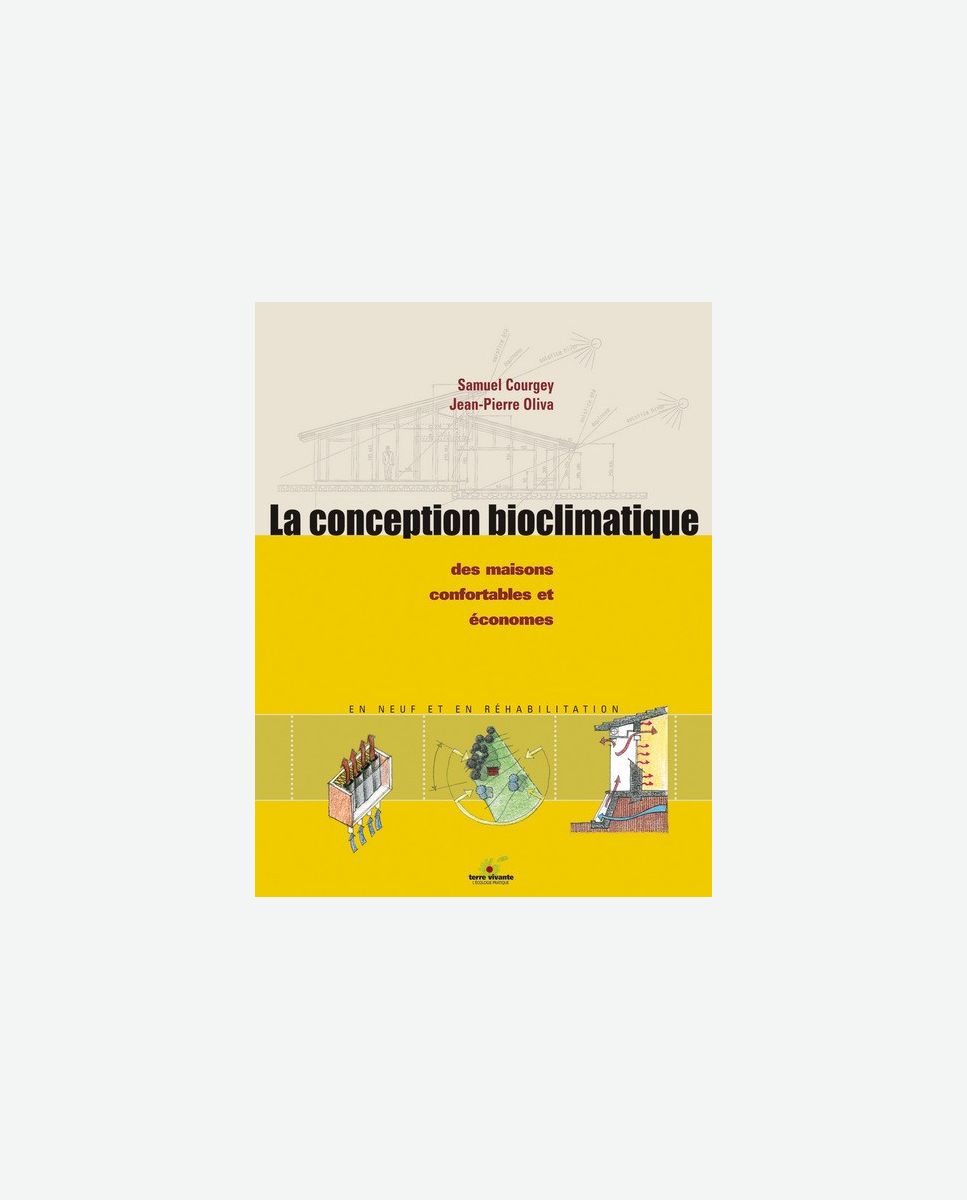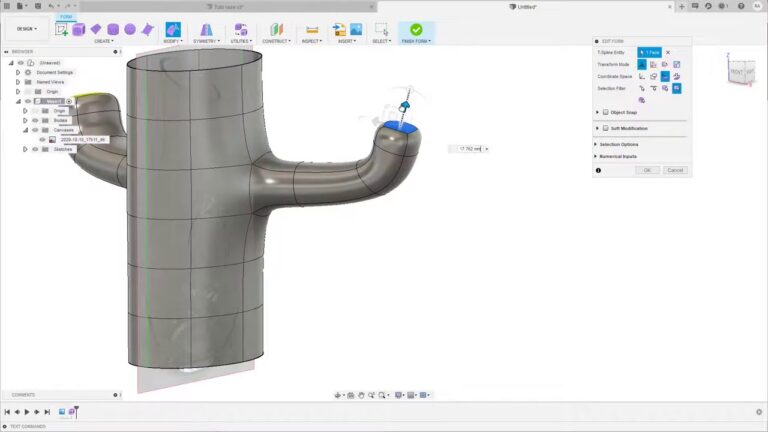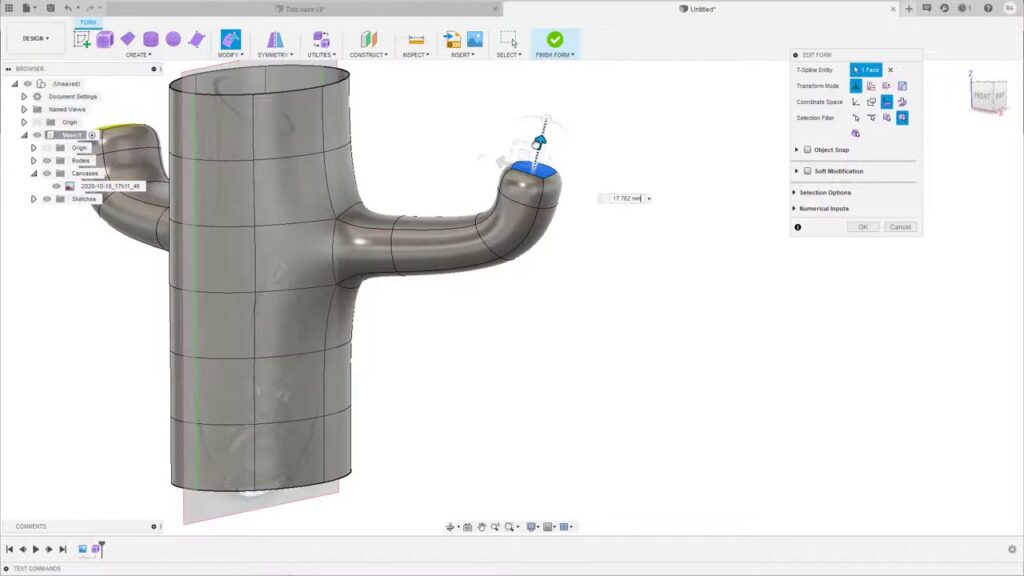Bioclimatic design has become a major imperative in the field of modern architecture, presenting itself as an appropriate response to growing environmental concerns. In the face of climate change challenges, architects are now called upon to rethink their strategies to create buildings that are not only aesthetic but also sustainable and adapted to climatic conditions. This article explores various aspects of bioclimatic design by presenting successful case studies and innovative strategies that illuminate the way towards an eco-responsible future.
Table of Contents
ToggleDefinition and challenges of bioclimatic design
Bioclimatic design is based on the principle of adapting architecture to the climatic specificities of a given location. It aims to optimize the use of natural resources, notably light, air, and water, to improve the thermal comfort of occupants while reducing energy consumption. This paradigm is integrated into a broader vision of environmental challenges, in a time when climate disasters and rising temperatures call into question traditional building methods.

The foundations of bioclimatic design
The principles of bioclimatic design integrate different key factors that must be considered when creating a building. Among these, we find:
- Building orientation: The location and orientation aim to maximize solar gain in winter and minimize overheating in summer.
- Low carbon footprint materials: Using durable and recycled materials to reduce the building’s environmental impact.
- Natural ventilation: Designing air circulation systems that decrease the need for air conditioning.
- Rainwater management: Integration of water collection and reuse systems.
Environmental impacts
The need for a radical change in our architectural approach is emphasized by alarming results regarding the environment. Buildings are responsible for a significant share of greenhouse gas emissions, and the adoption of bioclimatic design practices could help reduce these figures. Research indicates that buildings designed according to these principles could reduce their energy consumption by 30 to 50% in some cases.
Effective strategies in bioclimatic design
There is a wide range of strategies that can be applied in bioclimatic design. Architects and engineers are encouraged to explore these various options to maximize the efficiency and comfort of buildings.
Optimizing natural lighting
Proper natural lighting not only reduces dependence on artificial light but also contributes to the well-being of occupants. The following strategies allow for maximizing this lighting:
- Using large windows oriented to the south to capture sunlight during the day.
- Integrating skylights for interior spaces.
- Adopting reflective materials to amplify ambient light.
Passive heating and cooling systems
Passive heating and cooling systems exploit natural climatic conditions to maintain indoor comfort:
- Installation of massive walls or high thermal inertia materials that absorb and release heat.
- Creating shade structures to reduce undesirable solar gains.
- Geothermal systems for natural air conditioning.

Case studies: Exemplary buildings
Many buildings around the world illustrate the successful application of bioclimatic principles. For example:
- The Passive House of Freiburg in Germany, which maximizes energy efficiency through exceptional insulation.
- The Bosco Verticale in Milan, an example of how nature can be integrated into architecture to enhance the quality of life.
- The Eco-Cité project in Bordeaux, illustrating the integration of different dimensions of sustainability in an urban setting.
| Project Name | Location | Applied Bioclimatic Principles |
|---|---|---|
| Passive House | Freiburg, Germany | High thermal insulation, natural ventilation |
| Bosco Verticale | Milan, Italy | Integration of nature, reduction of heat island effect |
| Eco-Cité | Bordeaux, France | Rainwater management, sustainable materials |
Environmental technologies and innovations
With the advent of new energies and technological advances, the possibilities in terms of Green Building have expanded significantly. Architects must now focus not only on aesthetics but also on the ecological functionality of their creations.

Smart energy management systems
Digitization and automation play an increasing role in modern architecture. Many buildings integrate energy management systems to optimize their consumption:
- Integrated sensors to monitor energy use and adjust consumption in real time.
- Home automation technology for managing light, temperature, and security.
- Integration of renewable energy resources, like solar panels & co.
Innovative and sustainable materials
The choice of materials is essential for reducing the environmental impact of constructions. Biodegradable materials and those based on renewable resources, such as biosourced materials, represent an interesting alternative. Some examples of innovative materials are:
- Bioplastics: made from plants, reduce dependence on fossil fuels.
- Recycled materials: allow for the reuse of resources, thus limiting waste.
- Eco-friendly paints: low in VOCs to improve indoor air quality.
Regulatory implications and building standards
Regulation plays a key role in the acceptance and integration of bioclimatic design practices. Governments and standardization organizations work to establish laws that encourage sustainable construction.
Energy performance standards
New regulations impose energy performance standards for buildings, such as:
- RT 2020 in France: strict requirements on energy consumption, favoring passive houses.
- BBC Label (Low Consumption Building): encourages constructions with low energy consumption.
- LEED Certification: rating systems for buildings based on their sustainability and environmental impact.
Urban planning and zone adaptation
Urban planning must also account for environmental challenges and climate risks to avoid creating vulnerable areas. Priority actions include:
- Creation of buffer zones: green spaces that absorb rainwater and reduce flooding.
- Development of ecological corridors to promote biodiversity.
- Community engagement through awareness programs.

Future perspectives and the role of civil society
The role of civil society is crucial in the transition towards eco-responsible architecture. Every citizen has the responsibility to support projects that adhere to the principles of Earth & Habitat and EcoArchitecture.

Community engagement and education
Awareness and education about sustainable design must be strengthened to bring about cultural change. Strategies include:
- Educational programs on the importance of sustainability in construction.
- Encouraging local ecological building initiatives.
- Collaborating with associations and NGOs to promote sustainability.
Citizen initiatives and energy autonomy
The rise of energy autonomy is a growing phenomenon, where citizens take their energy supply into their own hands. Initiatives include:
- Installation of solar panel systems on residential roofs.
- Creation of energy communities to share renewable resources.
- Development of digital tools to track consumption and promote energy efficiency.














